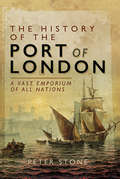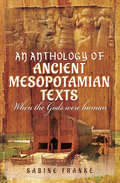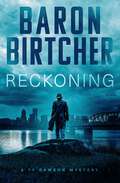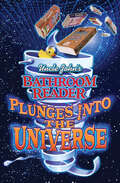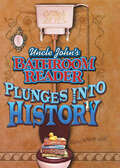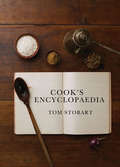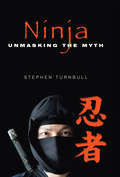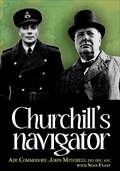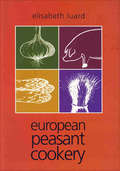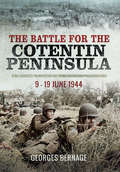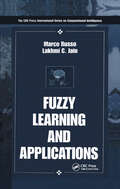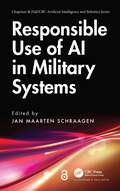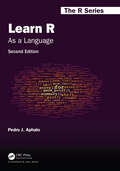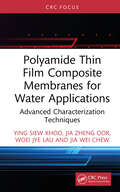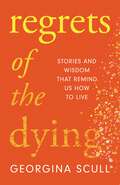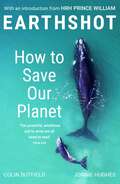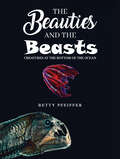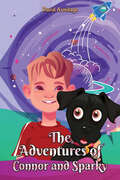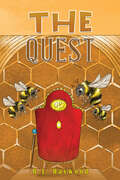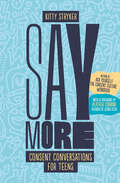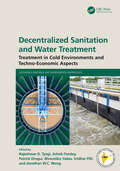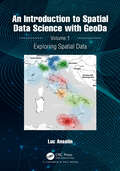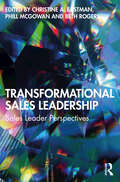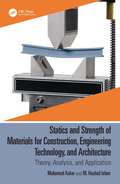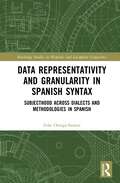- Table View
- List View
The History of the Port of London: A Vast Emporium of All Nations
by Peter Stone&“This meticulously researched account underlines the importance of the capital&’s docklands . . . from Roman landing to modern financial centre.&” —Discover Britain The River Thames has been integral to the prosperity of London since Roman times. Explorers sailed away on voyages of discovery to distant lands. Colonies were established and a great empire grew. Funding their ships and cargoes helped make the City of London into the world&’s leading financial center. In the nineteenth century a vast network of docks was created for ever-larger ships, behind high, prison-like walls that kept them secret from all those who did not toil within. Sail made way for steam as goods were dispatched to every corner of the world. In the nineteenth century London was the world&’s greatest port city. In the Second World War the Port of London became Hitler&’s prime target. It paid a heavy price but soon recovered. Yet by the end of the 20th century the docks had been transformed into Docklands, a new financial center. The History of the Port of London: A Vast Emporium of Nations is the fascinating story of the rise and fall and revival of the commercial river. The only book to tell the whole story and bring it right up to date, it charts the foundation, growth and evolution of the port and explains why for centuries it has been so important to Britain&’s prosperity. This book will appeal to those interested in London&’s history, maritime and industrial heritage, the Docklands and East End of London, and the River Thames.
An Anthology of Ancient Mesopotamian Texts: When the Gods were Human
by Sabine FrankeLearn about the ancient civilizations of Iraq and Syria, through the stories they told. This book gathers the best stories of ancient Near Eastern literature surrounding the Mesopotamian gods, men, and kings. It takes the reader on a journey back to the birth of literature in Mesopotamia—which at the same time seems so distant yet so familiar. Fairy tales, myths, and epics of this region are still able to entertain readers today—and allow us to delve into the fascinating life of this ancient civilization. This book includes fables such as that of the tooth worm, which causes tooth pain, as well as the great myth of Innanas, which describes the goddess Ishtar&’s transition to the underworld. There are also stories of daily life, such as that of a student, and the Sumerian incantations against a crying baby.
Reckoning (The Ty Dawson Mysteries #3)
by Baron BirtcherTy Dawson is a small-town sheriff with big-city problems, in this riveting crime thriller from the award-winning author of Fistful of Rain. As lawman, rancher, and Korean War veteran, Ty Dawson has his share of problems in the southern Oregon county he calls home. Despite how rural it is, Meriwether can&’t keep modernity at bay. The 1970s have changed the United States—and Meriwether won&’t be spared. A standoff looms when the US Fish & Wildlife Service seeks to separate longtime cattleman KC Sheridan from his water supply—ensuring the death of his livestock. If that&’s not enough trouble, a Portland detective is found dead in a fly-fishing resort cabin. Though the Portland police, including the victim&’s own partner, are eager to write off the tragedy as a suicide, Ty has his own thoughts on the matter—as well as evidence that points to murder. His suspicions soon mire him in a swamp of corruption that threatens nearly everyone around him. Turns out that greed and evil are contagious—and they take down men both great and small . . .Praise for the Ty Dawson Mysteries &“Combines the mystery and honesty of Craig Johnson&’s Longmire with the first-person narration of a fiercely independent Oregon character.&” —Sheila Deeth, author of John&’s Joy &“A masterful work of a time gone by . . . Ty Dawson is a cowboy, lawman, father and philosopher like none other.&” —Neal Griffin, Los Angeles Times–bestselling author of The Burden of Proof
Uncle John's Bathroom Reader Plunges into the Universe (Uncle John's Bathroom Reader)
by Bathroom Readers' InstituteAn entertaining trivia compendium flush with fun facts about all things science.Uncle John&’s Bathroom Reader Plunges into the Universe is your anecdote to boring science textbooks. Uncle John and his loony lab partners will take you back to the Big Bang and forward to the distant future. You&’ll see the science in everything around (and inside) you, and learn the truth about the most egregious science myths (such as—you can&’t &“sweat like a pig&” because pigs don&’t sweat). How many amazing facts await your visual cortex in these 494 pages made up of atoms (print version) or bits and bytes (e-book)? As Carl Sagan would have said, &“Billions and Billions!&” So put on your thinking cap and check out: · Pluto denied · Kitchen chemistry · Football gets physics-al · Planet Earth&’s sudden hot flashes · Food&’s incredible journey . . .through you · The science of surfing, skating, and snowboarding · How they plugged the hole in the ozone layer · How &“defenseless&” animals stay alive · Sci-fi that&’s more fi than sci · Ancient astronomers · Know your clouds And much, much more
Uncle John's Bathroom Reader Plunges Into History (Uncle John's Bathroom Reader)
by Bathroom Readers' InstituteThe trivia gurus behind the Uncle John&’s Bathroom Reader series plumb the depths of history in this compendium of easily digestible diversions. Whether you&’re a history buff, or you just like reading great stories, you&’ll see the past in a whole new light after reading Uncle John&’s Bathroom Reader Plunges into History. Uncle John uncovers the truth behind some of history&’s most persistent myths and flushes out information you were never taught in school. Where else could you learn about the 10 most-forgotten people in history, mistakes that led to great discoveries, and how a certain fish had a hand (er, fin) in beating Napoleon? Read all about . . . The short history of underwearOdd deaths of famous figuresAbe Lincoln, fashion iconThe real Lady GodivaRoyal inbreeds and promiscuous popesThe true story of Braveheart And much more!
Cook's Encyclopaedia
by Tom StobartA descriptive compendium of just about everything we eat and how we cook it—selected as &“one of the greatest cookbooks of all time&” (Waitrose Food Illustrated). Arranged alphabetically from Abalone to Zampone, Cook&’s Encyclopedia covers the majority of foods and processes used in cooking. Hundreds of ingredients are described, with English and foreign synonyms and scientific names; recipes are given in many cases to illustrate the use of the foodstuff in question. Cooking processes—including bottling, brewing, brining, curing, smoking, and vacuuming—are explained in great and illuminating detail. The aim is to both entertain and to instruct—in particular, to give a sense of the essence and individuality of each ingredient. Tom Stobart traveled widely, both as an explorer and a filmmaker, and his book was informed by an eye for telling details. Many fans say they would be lost without this book, which segues effortlessly between exhaustive reference work and handy recipe book, and back again. It explains the world of the kitchen, whether you&’re a beginner or an old hand, revealing the facts behind foods, equipment, and techniques. Stobart describes how baking powder works, for instance, the temperature at which bacteria grow, and how to make your own tomato ketchup, so every time you dip into this book, you&’ll be better equipped to return to the stove. &“A MUST, comprehensive, well-organized and well-written . . . a serious and important work of reference.&” —Alan Davidson, author of The Oxford Companion to Food
Ninja: Unmasking the Myth
by Stephen TurnbullThis history of the ninja uncovers the truth behind the image—from the exploits of medieval ninjas to their modern incarnation as pop culture icons. The ninja is a legendary figure in Japanese military culture, a fighter widely regarded as the world&’s greatest expert in secret warfare. The word alone conjures the image of a masked assassin dressed in black, capable of extraordinary feats of daring; a mercenary who disposes of enemies by sending sharp iron stars spinning towards them. This is, of course, a popular myth, based on exaggerations and Hollywood movies. But the truth, as Stephen Turnbull explains in Ninja, is even more fascinating. A leading expert on samurai culture, Turnbull presents an authoritative study of ninja history based on original Japanese sources, many of which have never been translated before. These include accounts of castle attacks, assassinations and espionage, as well as the last great ninja manual, which reveals the spiritual and religious ideals that were believed to lie behind the ninja&’s arts. Turnbull&’s critical examination of the ninja phenomenon ranges from undercover operations during the age of Japan&’s civil wars to the modern emergence of the superman ninja as a comic book character. The book concludes with a detailed investigation of the ninja in popular culture.
Churchill's Navigator
by Air Commodore John Mitchell Sean FeastAn RAF pilot who flew around the world with Winston Churchill during World War II tells his story. An RAF Volunteer Reserve officer, John Mitchell was mobilized on the outbreak of war—and just missed going to join a Battle Squadron in France where he would have undoubtedly been killed. Instead, he was posted to No. 58 Squadron flying Whitleys, surviving a tour of operations in 1940–41 that included ditching in the North Sea. Awarded the Distinguished Flying Cross, he was sent to the US, becoming involved in the development of the first navigation training simulators with the famous Link Trainer factory. There, he was awarded the US Legion of Merit, signed by Harry S. Truman. Then, returning to the UK in 1942, he was personally selected to join the crew of Winston Churchill&’s private aircraft, one of the early prototype Avro Yorks called Ascalon. For two years he navigated Churchill to conferences around the world—from North Africa to Italy, the Middle East to Moscow, including the famous Teheran and Yalta conferences. He also flew &“General Lyon&” (aka His Majesty George VI) on several occasions. After the war, he enjoyed an eventful career as an air attaché, including an intelligence posting to Moscow, and was senior navigation officer for the long range exercises over the Pole in the converted Lincoln, Aries III. His is an exceptional story, told with wit and verve to military aviation historian Sean Feast, who adds authoritative and informed insights.
European Peasant Cookery
by Elisabeth LuardRecipes reflecting the rich traditions of twenty-five countries, passed down through generations. Peasant cookery offers healthy, real food—and is as relevant now as it was centuries ago. In this remarkable book, Elisabeth Luard sets out to record the principles of European cookery and to rediscover what has been lost in over-refinement. The recipes come from twenty-five countries, ranging from Ireland in the west to Romania in the east, Iceland in the north to Turkey in the south. This enormous compendium covers vegetable dishes; potato dishes; beans, lentils, polenta, and cornmeal; rice, pasta, and noodles; eggs, milk, and cheeses; fish, poultry, small game, pork, shepherd's meats; breads and yeast pastries; sweet dishes; preserves; and more. Filled with an authenticity rooted in Elisabeth Luard&’s years of living and cooking in Europe, these recipes are peppered with hundreds of fascinating anecdotes and little known facts about local history and folklore.
The Battle for Cotentin Peninsula: 9–19 June 1944
by Georges BernageIn June 1944, the Americans left the Sainte-Mre-Eglise and Utah Beach bridgehead and crossed the Merderet river to the Chausse de la Fiere, taking Picauville on 10 June. Their advance was slowed following the failure of the 90th Infantry Division, but they were able to take Pont-l'Abbe on 12 June and Saint-Sauveur-le-Vicomte 16 June. Two days later they cut the Cotentin peninsula at Barneville, before heading north towards Cherbourg.As well as authentic eyewitness testimony, the book also acts as a field guide, including maps and both contemporary and modern photographs.
Fuzzy Learning and Applications (International Series on Computational Intelligence)
by Marco RussoWith low computational complexity and relatively short development time, Fuzzy Logic is an indispensable tool for engineering applications. The field is growing at an unprecedented rate, and there is a need for a book that describes essential tools, applications, examples, and perspectives in the field of fuzzy learning. The editors of Fuzzy Learni
Responsible Use of AI in Military Systems (Chapman & Hall/CRC Artificial Intelligence and Robotics Series)
by Jan Maarten SchraagenArtificial Intelligence (AI) is widely used in society today. The (mis)use of biased data sets in machine learning applications is well‑known, resulting in discrimination and exclusion of citizens. Another example is the use of non‑transparent algorithms that can’t explain themselves to users, resulting in the AI not being trusted and therefore not being used when it might be beneficial to use it.Responsible Use of AI in Military Systems lays out what is required to develop and use AI in military systems in a responsible manner. Current developments in the emerging field of Responsible AI as applied to military systems in general (not merely weapons systems) are discussed. The book takes a broad and transdisciplinary scope by including contributions from the fields of philosophy, law, human factors, AI, systems engineering, and policy development.Divided into five sections, Section I covers various practical models and approaches to implementing military AI responsibly; Section II focuses on liability and accountability of individuals and states; Section III deals with human control in human‑AI military teams; Section IV addresses policy aspects such as multilateral security negotiations; and Section V focuses on ‘autonomy’ and ‘meaningful human control’ in weapons systems.Key Features: Takes a broad transdisciplinary approach to responsible AI Examines military systems in the broad sense of the word Focuses on the practical development and use of responsible AI Presents a coherent set of chapters, as all authors spent two days discussing each other’s work This book provides the reader with a broad overview of all relevant aspects involved with the responsible development, deployment and use of AI in military systems. It stresses both the advantages of AI as well as the potential downsides of including AI in military systems.
Learn R: As a Language (Chapman & Hall/CRC The R Series)
by Pedro J. AphaloLearning a computer language like R can be either frustrating, fun or boring. Having fun requires challenges that wake up the learner’s curiosity but also provide an emotional reward for overcoming them. The book is designed so that it includes smaller and bigger challenges, in what I call playgrounds, in the hope that all readers will enjoy their path to R fluency. Fluency in the use of a language is a skill that is acquired through practice and exploration. For students and professionals in the biological sciences, humanities and many applied fields, recognizing the parallels between R and natural languages should help them feel at home with R. The approach I use is similar to that of a travel guide, encouraging exploration and describing the available alternatives and how to reach them. The intention is to guide the reader through the R landscape of 2024 and beyond.What is new in the second edition? Text expanded by more than 25% to include additional R features and gentler and more detailed explanations Contains 24 new diagrams and flowcharts, seven new tables, and revised text and code examples for clarity All three indexes were expanded, and answers to 28 frequently asked questions added What will you find in this book? Programming concepts explained as they apply to current R Emphasis on the role of abstractions in programming Few prescriptive rules—mostly the author’s preferences together with alternatives Presentation of the R language emphasizing the “R way of doing things” Tutoring for “programming in the small” using scripts for data analysis Explanation of the differences between R proper and extensions for data wrangling The grammar of graphics is described as a language for the construction of data visualisations Examples of data exchange between R and the foreign world using common file formats Coaching to become an independent R user, capable of writing original scripts and solving future challenges
Polyamide Thin Film Composite Membranes for Water Applications: Advanced Characterization Techniques
by Ying Siew Khoo Jia Zheng Oor Woei Jye Lau Jia Wei ChewThe global market for polymeric membranes used in water and wastewater treatment is experiencing robust growth, with polyamide (PA) thin film composite (TFC) membranes dominating reverse osmosis (RO) and nanofiltration (NF) processes. This monograph presents the latest trends in characterization techniques for PA TFC membranes and provides the most current and relevant information on these techniques tailored specifically for TFC NF and RO membranes.Features• Focuses solely on the characterization of PA TFC membranes used in water and wastewater treatment.• Provides the latest insights into employing advanced and emerging characterization tools to analyze the intrinsic properties of the PA selective layer and evaluate the overall performance of PA TFC membranes during filtration processes.• Extensively examines the strengths and limitations of each membrane characterization tool, offering in-depth analyses for readers.This book is an indispensable reference and practical guide for advanced students, researchers, and scientists involved in NF and RO membrane fabrication and characterization, including those in the fields of chemical, materials, and environmental engineering.
Regrets of the Dying: Stories and Wisdom That Remind Us How to Live
by Georgina Scull'A beautiful and moving reminder to appreciate life' Roxie Nafousi, author of Manifest'This book may on first glance appear to be about death and regrets, but is in reality about life and choices. It is warmly life-affirming ... A magnificent read that will inspire. I loved it' Sue Black 'So beautiful ... Perfectly written and judged ... A wonderful book that made me grasp life a little more firmly' Dr Chris van Tulleken A powerful, moving and hopeful book exploring what people regret most when they are dying and how this can help us lead a better life. If you were told you were going to die tomorrow, what would you regret?Ten years ago, without time to think or prepare, Georgina Scull ruptured internally. The doctors told her she could have died and, as Georgina recovered, she began to consider the life she had led and what she would have left behind.Paralysed by a fear of wasting what seemed like precious time but also fully ready to learn how to spend her second chance, Georgina set out to meet others who had faced their own mortality or had the end in sight.
Earthshot: How to Save Our Planet
by Colin Butfield Jonnie HughesThe Earthshot concept is simple: Urgency + Optimism = Action. We have ten years to turn the tide on the environmental crisis, but we need the world's best solutions and one shared goal - to save our planet.It's not too late, but we need collective action now. The Earthshots are unifying, ambitious goals for our planet which, if achieved by 2030, will improve life for all of us, for the rest of life on Earth, and for generations to come.They are to:· Protect and Restore Nature· Clean our Air· Revive our Oceans· Build a Waste-Free World· Fix our ClimateEARTHSHOT: HOW TO SAVE OUR PLANET is the first definitive book about how these goals can tackle the environmental crisis, from rainforests to coral reefs, via wilderness, cities and in our own homes. It is a critical contribution to the most important story of the decade.
The Beauties and The Beasts: Creatures At the Bottom of the Ocean
by Betty PfeifferWhen do you know someone best? When you read their biography or when you have a conversation with them? Of course, it&’s when you have a one-on-one visit. Go down in a submersible, the HOV (Human Occupied Vehicle) Alvin, to make the journey to their home. You&’ll meet the weird, the cute, the flashy, and the fierce creatures of the deep.In this book, you won&’t just read a bunch of facts about these remarkable animals—you can learn to know them personally. They&’ll talk to you about themselves, their relatives, and their enemies. As a surprise bonus, you will find out about the many ways your new friends are helping us solve some of our medical problems.Suppose you are interested in learning more about what happens in the ocean. In that case, two people (real people) will tell you what they were like at your age and what motivated them to make the ocean, which covers about 70 percent of the earth&’s surface, their life&’s work.
The Adventures of Connor and Sparky
by David ArmitageDreams can be anything you want them to be, but imagine flying through space doing cartwheels, flying past a giant floating doggy biscuit, or realizing that planet Mars, was in fact a giant chocolate bar. But this is just part of the story. Connor used to be such a happy little boy, but world events had made him sad and confused. Despite the best efforts of his mum and dad, and all the people who loved him, to cheer him up, nothing seemed to work. A new plan was needed, but would it work? It didn’t take long for Connor and his new dog, Sparky, to become the best of friends. At night-time, sleeping soundly, the pair would begin to have the wildest of adventures together. Join them on their first as they race aliens around Saturn and try to beat the current intergalactic champion. Starting from the back, the dynamic duo would need all their skills, determination, and resilience, to cross the ‘Slime Line’ first, but could they, do it?
The Quest
by R. J. HaywoodIn The Quest, delve into an environmentally conscious tale that follows the perilous journey of four intrepid bees: Hornbee, Frizzbee, Freebee, and Tobee. Tasked by their ailing Queen to find uncontaminated pollen, these brave bees set off in different directions – North, East, West, and South – to save their hive and their beloved Queen from the lethal effects of insecticide-tainted pollen. From epic battles to stirring romances, the story captures poignant moments of heartache as well as uplifting glimmers of hope. As the bees face various trials and tribulations, they find themselves contemplating the uncertain future for bees and humanity alike. At the heart of their adventure lies a deeply touching theme: the bonds of community and the sense of security derived from belonging to their hive, a unity anchored by their Queen.
Say More: Consent Conversations for Teens
by Kitty StrykerTalking about consent can feel overwhelming, especially for young people who may be navigating their own boundaries for the first time. In Say More, consent culture activist Kitty Stryker guides teenagers in exploring what consent means to them. This timely and practical workbook allows the reader to work at their own pace and in their own way, with concrete examples from Kitty' s youth, prompts inspired by questions teens have asked her and comprehensive resources to encourage exploration and introspection.
Decentralized Sanitation and Water Treatment: Treatment in Cold Environments and Techno-Economic Aspects (Sustainable Industrial and Environmental Bioprocesses)
by Rajeshwar D Tyagi Ashok Pandey Patrick Drogui Bhoomika Yadav Sridhar Pilli Wong, Jonathan W.C.This book discusses decentralized sanitation for wastewater treatment and management in cold environments. It addresses the knowledge gap that exists between the understanding of centralized and decentralized wastewater treatment approaches. Decentralized Sanitation and Water Treatment: Treatment in Cold Environments and Techno-Economic Aspects covers the sustainability principles, various technologies involved, decentralized treatment in cold countries, and the economic and social feasibility of decentralized sanitation. It provides solutions for the conservation of water sources and target-oriented sanitation approaches for wastewater treatment and recycling.Key Features Reviews the current status, challenges, and future perspectives of decentralized water treatments Discusses decentralized sanitation, water, and wastewater treatment in cold environments and Northern countries Focuses on interdisciplinary approaches of sustainability and circular economy Covers life cycle and environment assessment of decentralized sanitation systems Reviews the environmental, techno-economic, and social aspects of decentralized sanitation systems The book is meant for professionals and researchers working on wastewater treatment, environmental engineering, and ecology.
An Introduction to Spatial Data Science with GeoDa: Volume 1: Exploring Spatial Data
by Luc AnselinThis book is the first in a two-volume series that introduces the field of spatial data science. It offers an accessible overview of the methodology of exploratory spatial data analysis. It also constitutes the definitive user’s guide for the widely adopted GeoDa open-source software for spatial analysis. Leveraging a large number of real-world empirical illustrations, readers will gain an understanding of the main concepts and techniques, using dynamic graphics for thematic mapping, statistical graphing, and, most centrally, the analysis of spatial autocorrelation. Key to this analysis is the concept of local indicators of spatial association, pioneered by the author and recently extended to the analysis of multivariate data.The focus of the book is on intuitive methods to discover interesting patterns in spatial data. It offers a progression from basic data manipulation through description and exploration to the identification of clusters and outliers by means of local spatial autocorrelation analysis. A distinctive approach is to spatialize intrinsically non-spatial methods by means of linking and brushing with a range of map representations, including several that are unique to the GeoDa software. The book also represents the most in-depth treatment of local spatial autocorrelation and its visualization and interpretation by means of GeoDa.The book is intended for readers interested in going beyond simple mapping of geographical data to gain insight into interesting patterns. Some basic familiarity with statistical concepts is assumed, but no previous knowledge of GIS or mapping is required.Key Features:• Includes spatial perspectives on cluster analysis• Focuses on exploring spatial data• Supplemented by extensive support with sample data sets and examples on the GeoDaCenter websiteThis book is both useful as a reference for the software and as a text for students and researchers of spatial data science.Luc Anselin is the Founding Director of the Center for Spatial Data Science at the University of Chicago, where he is also the Stein-Freiler Distinguished Service Professor of Sociology and the College, as well as a member of the Committee on Data Science. He is the creator of the GeoDa software and an active contributor to the PySAL Python open-source software library for spatial analysis. He has written widely on topics dealing with the methodology of spatial data analysis, including his classic 1988 text on Spatial Econometrics. His work has been recognized by many awards, such as his election to the U.S. National Academy of Science and the American Academy of Arts and Science.
Transformational Sales Leadership: Sales Leader Perspectives
by Christine A. Eastman Phill McGowan Beth RogersTransformational Sales Leadership: Sales Leader Perspectives offers viewpoints from 12 leaders across the global sales industry, all of which challenge conventional sales models and promote visionary ways of thinking about sales and leadership.The leaders who share their professional stories in the book are from organizations including SAP, Google, Nationwide US, and Royal Caribbean, as well as their own practices, and they represent a new breed of salespeople who are increasingly sought after by organizations which need to transform their practices. They run teams, drive analytics, and improve operational excellence, and their careers rise or fall on getting the right KPIs. Their stories address solutions to age-old sales problems, but they bring a new perspective to the sales function in the digital age. The book focuses on what sales leaders need in order to be innovative. Specifically, the book shows you how to:• Coach sales people through disruption;• Leverage the most valuable habits for success; and• Provide for meaning and purpose in the hyper-connected and volatile sales industry.If you are a sales professional looking to succeed in challenging scenarios, the journeys recounted in this book demonstrate how the landscape of sales has changed and how thinking about sales differently can help you transform your career.
Statics and Strength of Materials for Construction, Engineering Technology, and Architecture: Theory, Analysis, and Application
by Mohamed Askar M. Rashad IslamStatics and Strength of Materials for Construction, Engineering Technology, and Architecture: Theory, Analysis, and Application provides students and industry professionals with the necessary statics and strength of materials background for more innovative approaches to particular fields of engineering technology, construction engineering and management, civil engineering, and architectural technology. It presents an introduction to statics, a review of algebra and trigonometry, concepts of vectors, a classification of building structural systems, an overview of advanced topics in statics and strength of materials, and frameworks of real-world application projects.This book contains 19 chapters and discusses several topics related to statics and strength of materials, such as coplanar force systems; the equilibrium of particle and rigid bodies; design loads; beam and frame reactions; trusses; arches, cables, and pulleys; space force systems; centroid of areas; moment of inertia; friction; properties of materials; axial deformation; bending and shear stress; torsional stress; combined loading; stress transformation; deflection; and stress in columns.Each chapter includes an Instructor’s Solution Manual and Guide with instructional materials and comprehensive explanations of the related practice problems, critical thinking exercises, and application projects.
Data Representativity and Granularity in Spanish Syntax: Subjecthood across Dialects and Methodologies in Spanish (Routledge Studies in Hispanic and Lusophone Linguistics)
by Iván Ortega-SantosData Representativity and Granularity in Spanish Syntax focuses on the dialogue between Generative Grammar, Variationism, and experimental linguistics with a unique emphasis on Spanish linguistics.Combining formal syntax and empirical data collection, this volume analyzes and compares various data collection methods in syntactic theory, and examines a wide variety of approaches to gain novel insight in this emerging area. Through the case study of subject properties in Spanish, with an emphasis on how differences in data collection and data analysis standards may shape our perception of the object of study, this book addresses the following questions: (a) How do the data gathered through the standard methodology in each discipline diverge (if at all) and why? and (b) What kind of research questions can be answered with the standard methodology in each field? The volume argues for methodological crosspollination to avoid forcing data to conform to field-specific expectations and to appreciate language variation for what it has to tell us about linguistic theory, marrying the goals of Generative Grammar with data-driven research.This is an essential resource for researchers in the area of formal and generative syntax, linguists with an interest in data collection standard in syntax, and graduate or advanced undergraduate students in the field of Spanish linguistics.
